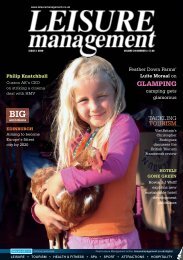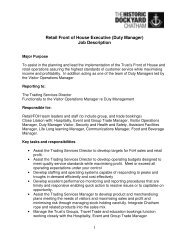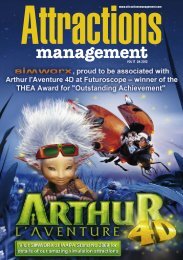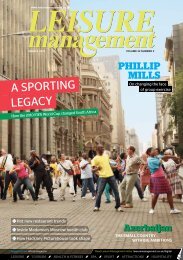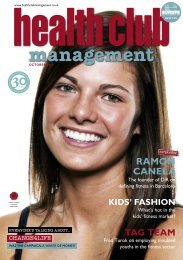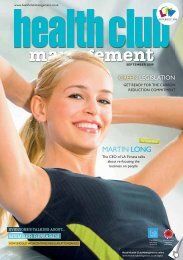Sports Management Issue 1 2012 - Leisure Opportunities
Sports Management Issue 1 2012 - Leisure Opportunities
Sports Management Issue 1 2012 - Leisure Opportunities
Create successful ePaper yourself
Turn your PDF publications into a flip-book with our unique Google optimized e-Paper software.
The use of synthetic turf in football continues to generate much debate, particularly<br />
with the growing interest from professional clubs. SAPCA CEO Chris Trickey offers<br />
guidance on its development, performance standards and long-term benefits<br />
ynthetic turf pitches could be making<br />
a shock comeback if some Football<br />
League clubs get their way. The debate<br />
has begun to heat up following<br />
a decision by clubs such as Wycombe and Accrington<br />
to investigate reintroducing synthetic<br />
turf pitches. A subsequent Sky <strong>Sports</strong> debate<br />
called Turf Wars fuelled the debate and all 72<br />
Football League clubs are now being asked to<br />
discuss the issue in three divisional meetings.<br />
SAPCA, the trade body that represents<br />
sports and play facility construction in the UK,<br />
helps the sector to separate the facts from the<br />
myths regarding this contentious subject.<br />
<br />
<br />
The most significant change over the last decade<br />
has been the much greater use of ‘third<br />
generation’ or 3G synthetic grass surfaces,<br />
using relatively long-pile, and very sophisticated,<br />
yarns with rubber and sand in-fills. These<br />
surfaces have been developed to replicate the<br />
playing performance of high-quality natural<br />
turf surfaces and have become very popular<br />
for both football and rugby. Needless to say,<br />
they perform very much better than the old<br />
sand-filled surfaces installed at a number of<br />
professional football clubs in the 1980s.<br />
There have been very significant advances<br />
in the yarns and fibres used for synthetic turf<br />
surfaces. There is now a much wider range of<br />
yarns available, with different profiles, shapes<br />
and thicknesses, which make it easier to<br />
achieve the playing performance needed for<br />
individual sports, and with greater consistency.<br />
Fibres are now also more durable, enabling<br />
surfaces to achieve longer life expectancy.<br />
PIC: ©WWW.SHUTTERSTOCK.COM<br />
<br />
<br />
The choice of surface is sometimes presented<br />
as a battle between natural and synthetic<br />
turf, but few would argue that most players<br />
would prefer to play on a top quality natural<br />
pitch, if they can. FIFA’s Quality Concept<br />
(see box out) seeks to promote football turf<br />
mainly in regions where the climate makes<br />
it impossible to play matches on good natural<br />
turf all year round.<br />
A quick look at old footage from Match of<br />
the Day will highlight that the quality of natural<br />
turf pitches at the top level of the game<br />
has improved dramatically over recent years<br />
and are a great credit to the groundsmen<br />
<br />
<br />
<br />
72 Read <strong>Sports</strong> <strong>Management</strong> online sportsmanagement.co.uk/digital<br />
<strong>Issue</strong> 1 <strong>2012</strong> © cybertrek <strong>2012</strong>



